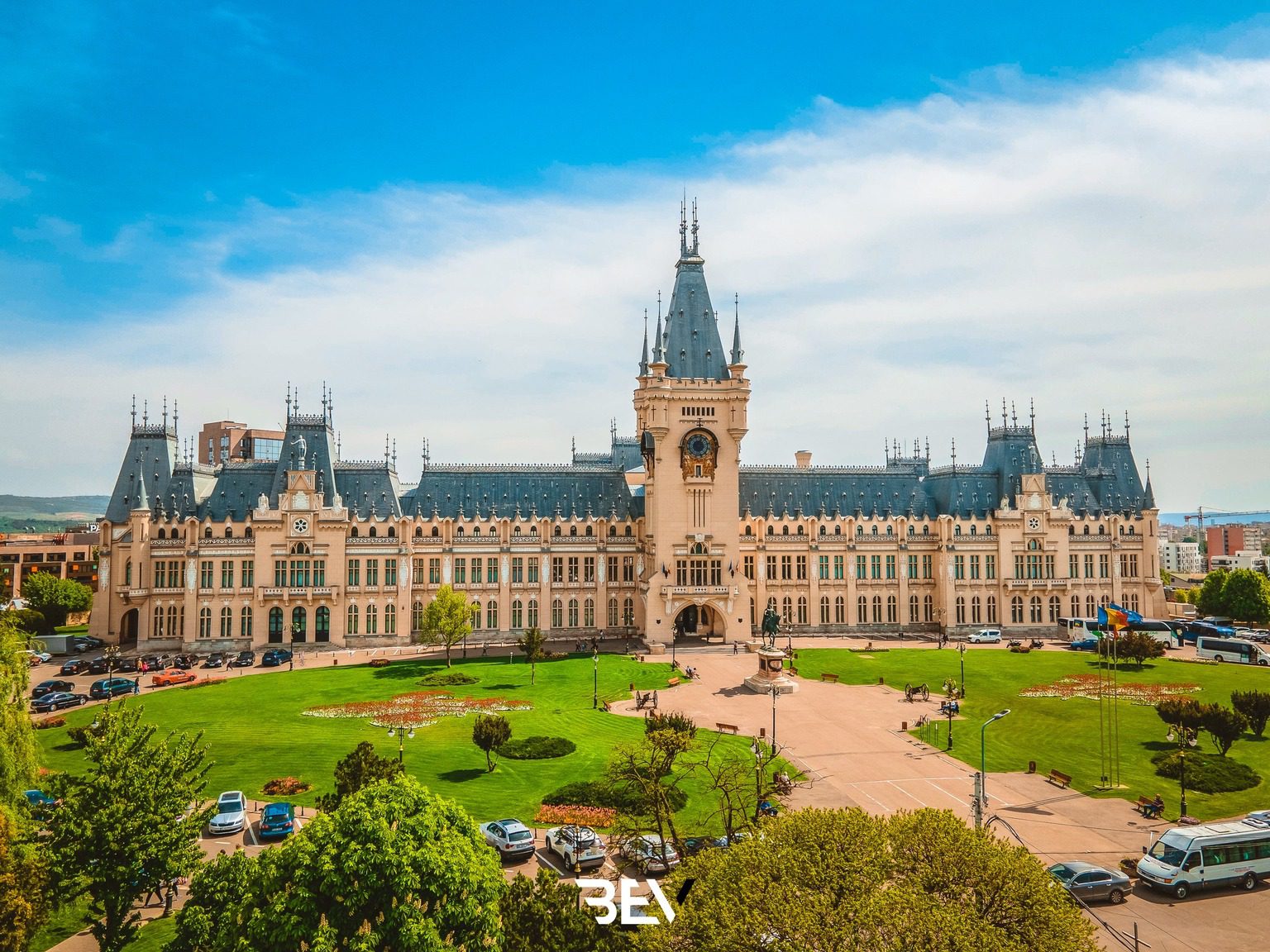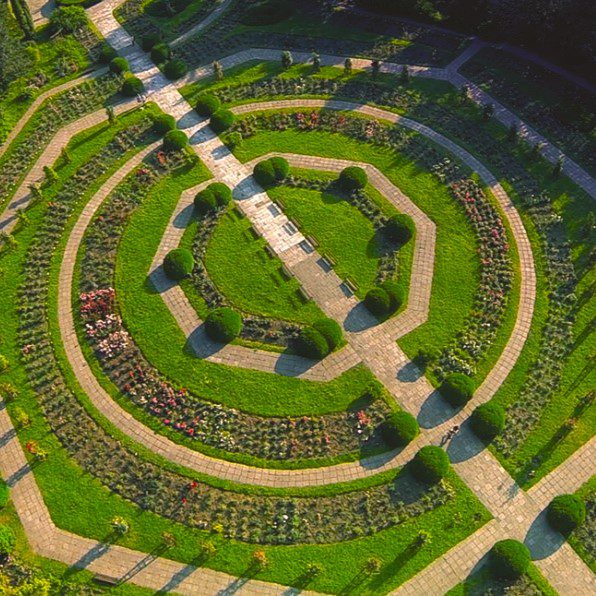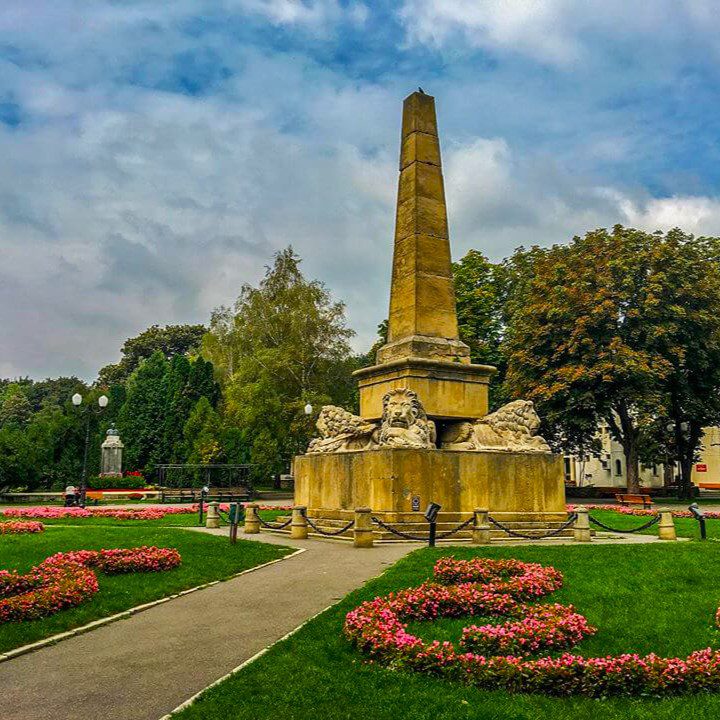Iași was the capital of Moldova for three centuries which makes it an incredibly rich city from a historical point of view. A visit to this important city in the north-east of Romania will transport you to times long gone, a fact facilitated by the many historic buildings and monuments that have been preserved over time. The urban landscape of Iași is a combination of museums, palaces, historic buildings and green spaces ideal for rest. If you are planning to get to Iași and you only have one day to explore the city, below you will find some recommendations to keep in mind:
Tourist attractions
Palace of Culture
This building is a symbolic figure in the architectural landscape of Iași, being considered a real jewel. Once you get in front of the building, you will instantly understand why that is. The dimensions of the palace, the neo-Gothic architecture, the building’s tower and it’s hedge paint an idyllic landscape, away from the contemporary reality. The Palace of Culture hosts four museums that allow visitors to deepen their knowledge in various fields: art, history, ethnography, science and technology.

The Clock Tower
The Clock Tower is part of the grandiose Palace of Culture and has a special significance for the people of Iași. From hour to hour, the clock announces and commemorates, through the song “Hora Unirii”, an important event for Romanians: the realization of the desideratum of national unity. The watch was created in 1900 by a German engineer and has a special mechanism that began to be used in the 16th century.
Golia Monastery
The building resembles a medieval fortress due to the special features that make it stand out: walls, towers and large gates. The monastery is built according to the Renaissance architectural style. The monastery ensemble also has the following elements: the Golia tower, the first water house in the city, the house with columns, as well as the abbey.

Elizabeth Esplanade
It is a public space arrangement area that bears the name of “Râpa Galbena” – a place with a difference in level that is located at the base of Copou Hill. This construction was erected to facilitate pedestrian access on the station route – Copou Hill – the central area. The construction is one of the items on the list of historical monuments on the territory of Iași County.

Activities
- Take a walk on Stefan cel Mare Boulevard and admire its buildings: Three Hierarchs Monastery, the Catholic Cathedral, the Metropolitan Church, the City Hall, the National Theatre.
- Walk through Unirii Square, where you can see the following buildings: Select Hotel, Alexandru Ioan Cuza Monument, Traian Hotel
- Visit the Sabin Bălaşa Frescoes Gallery at Al. I. Cuza University.
- Dine at the Panoramic restaurant, where in addition to the “culinary delights”, you can enjoy a wonderful view.
- Admire the city from up high on Dealul Cetății.
Locations
Botanical Gardens
If you are looking for a quiet place to recharge your batteries after the long journey you have taken to get to Iași – the Botanical Garden is an ideal place. A visit here will introduce you to the secrets of the diversity of the living world, of the vegetation and flora in Romania and of that from around the world. A special place in the botanical garden is the “Rozarium” section, where you can admire over 600 varieties of roses, a collection that’s unique in the country.

Exhibition Park
Yet another oasis of relaxation in the city this place offers you the opportunity to walk among the alleys, plantations and animated flower rounds. Here you can also find busts of some Romanian personalities. At the same time, inside the park, you will notice replicas of the Arch of the Mihalian Academy, of the “Bolta Rece” and of the Ancuța Inn. In this setting there are playgrounds for the little ones, as well as areas where skateboarding and rollerblading enthusiasts can play at will.

Copou Park
This is the oldest park in the city and it enchants with an impressive landscape. Inside the green space there is an emblematic monument – the Lions Obelisk, busts of some personalities from the national cultural landscape, the Tilia tree of the poet Mihai Eminescu, the house of culture “Mihai Ursachi”.

